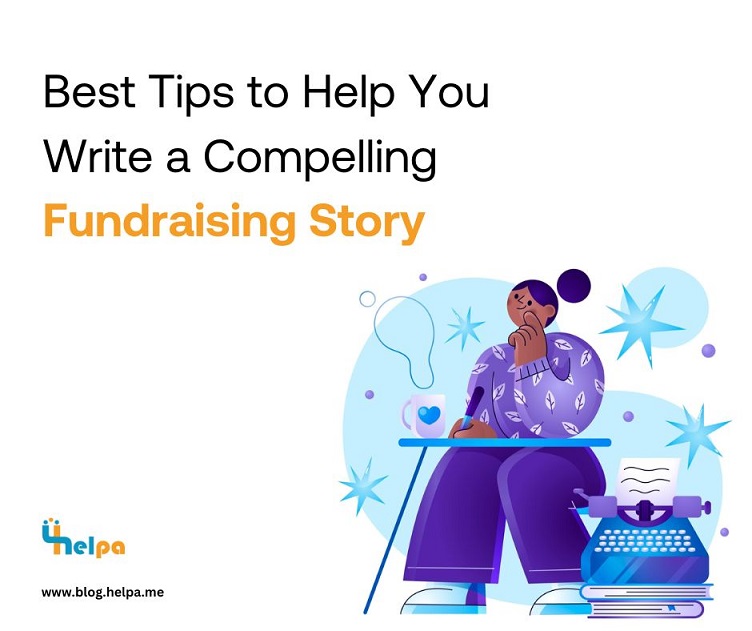
Your loved one’s life is on the line, and every moment counts. Medical bills are piling up, and the weight of their illness is crushing your family’s spirits. But there’s hope. With crowdfunding, you can rally your community, raise vital funds, and give your loved one a fighting chance. But it all starts with a story—a story that captures the hearts of strangers and their pockets.
One of the keys to successful fundraising is writing an honest but powerful story. A good story possesses the ability to convert a passive viewer of your profile into a recurrent donor who will share your fundraiser with others. There is indeed power in the pen.
What’s in a good fundraising story?
- Catchy introduction or hook
- Backstory
- The problem or incident
- The impact of the incident
- Your request and the potential impact of the request
- Call-to-action
Why do you need to create an emotional fundraising story?
- Good storytelling gives potential donors context or a backstory for your fundraiser. It paints a picture of your person and your life before the tragedy.
- It helps viewers to humanise and empathise with the beneficiary of the fundraiser.
- It inspires people to donate to your campaign. Sometimes it could motivate a single person to donate multiple times.
- Stories can convert strangers into promoters of your campaign.
- Ultimately, a compelling story possesses the power to help you reach your target.
Now that we have established that good stories are pivotal to meeting your fundraising goal, let us help you write a befitting story that will bring your loved one closer to healing and recovery.
- Find inspiration
There is a popular saying that goes, If you want to be the best, study the best. In this case, if you want to write a great fundraising story, learn from the best storytellers and successful campaigns.
Get inspiration from some of the greatest fundraising stories like Emma’s Last Chance to Beat Cancer, Climbing Everest for Cancer, and Saving Mila — Time is Running Out!
As you observe these stories, ask yourself salient questions such as;
- What can you learn from their storytelling method and format?
- Are there any particular segments that made you feel strongly?
- What emotions do you want people to feel when they read your own story?
- Begin with a personal introduction
When writing a beautiful story, begin with a heartfelt personal introduction that connects you to the cause. Clearly define your relationship to the beneficiary or the issue at hand, whether it’s as a loving parent or as someone personally affected. Be honest, direct, and concise, sharing the role that sparked your passion to start this fundraiser. Keep it brief, with more context to come later if needed.
For example: My name is Lydia and I’ve been battling Lymphoma for the past six months.
- Build the foundation of your story
In writing, you have to define the essential elements of the story to help you tell a full story. Your story should provide answers to basic questions such as: who, what, where, when, why, and how.
Questions about:
- What the funds will be used for
- Who the recipient is
- How the donations will help the beneficiary
- Why the recipient needs the donation for
For example: I am a primary school teacher and my life changed for the worst when _____.
- Share your journey so far
If you’ve explored other options before turning to crowdfunding, describe the steps you’ve taken and the obstacles you’ve faced. This is also a chance to highlight the impact of your struggle on your loved ones, community, and society. Provide more context by answering questions like:
- What efforts have you or your loved ones made to overcome the challenge?
- How have the hurdles you’ve faced affected you personally and shaped your story?
- What mega ripple effects has your struggle had on those around you?
- Highlight the moment of truth
Talk about the turning point that made you turn to online crowdfunding. What happened that made you decide to take the fundraising route? Weave it into your story seamlessly so your reader can follow the progression.
- Connect to potential donors with compassion
You should work on sharing your story honestly and bravely. People care about those who are doing their best despite tough circumstances. By being open and vulnerable, you help others connect with you on a personal level. It’s scary to share sensitive moments, but it’s the key to forming a strong connection with potential donors and inspiring them to support your cause.
- Choose a memorable fundraising title
The title of your fundraising is the first thing people will see. For this reason, it is a crucial component of your campaign. You can go for a sombre title, a funny one, or even a straightforward title. Anything that stays on people’s minds. Below are the titles of successful fundraisers:
- Emma’s Last Chance to Beat Cancer
- Climbing Everest for Cancer
- Saving Mila — Time is Running Out!
- Add life to your story with pictures and videos
Visuals have the power to convey emotions, illustrate the impact of donations, and bring your story to life. Adding compelling photos and videos to your fundraising story can make a huge difference. Include clear images or videos that showcase the beneficiary, the challenge, and the progress made so far. This could be a photo of you or a video explaining your situation. By adding visuals, you can create a lasting impression on your readers.
Tip to consider when forming the story
– Start with a Hook: Grab the reader’s attention with a personal story or a thought-provoking question.
–Be Authentic: Share your genuine emotions, experiences, and motivations to create a connection with your audience.
– Show, Don’t Tell: Use descriptive storytelling to paint a picture in the reader’s mind, rather than simply stating facts.
– Use Emotional Triggers: Appeal to the reader’s emotions by sharing stories of struggle, hope, and resilience.
– Keep it Concise: Cut to the heart of the story and avoid unnecessary details.
– Use a Conversational Tone: Write in a friendly, approachable voice that makes the reader feel like they’re part of a conversation.
– Use Storytelling Elements: Incorporate elements like setting, characters, conflict, and resolution to create a narrative arc.
– Include a Clear Call-to-Action: Tell the reader exactly what you’re asking them to do and where they come in.
– Proofread and Edit: Ensure your story is free of errors and flows smoothly.
Takeaway
A compelling fundraising story is a key to unlocking people’s kindness. By following these tips, you’ll be able to craft a narrative that brings you closer to healing and recovery. With a clear and concise introduction, a strong foundation, and a call-to-action, you’ll be well on your way to reaching your fundraising goal.
Launch your Helpa campaign today and start
writing your story to give yourself the fighting chance you deserve!
